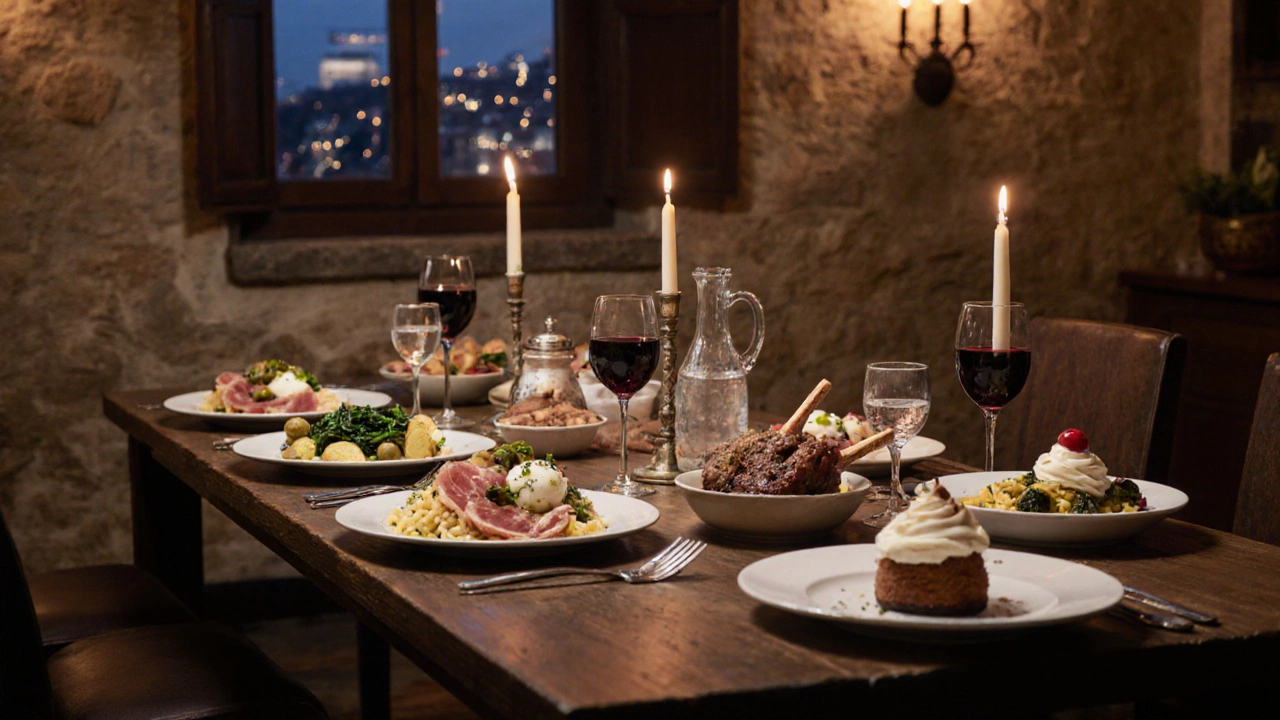What Italians Eat for Dinner: Traditional Meals, Regional Flavors & Tips
Discover the traditional structure, regional dishes, and tips for recreating an authentic Italian dinner at home.
When exploring Italian dinner foods, you’re stepping into a world where simple ingredients become unforgettable meals. Italian dinner foods, the collection of traditional and contemporary dishes served at the main meal in Italy, ranging from pasta and risotto to hearty meat stews. Also known as cena italiana, it reflects regional ingredients and centuries‑old cooking methods. This tag brings together recipes that showcase the heart of Italy’s evening table, and it sets the stage for everything that follows.
The backbone of any Italian dinner is Pasta, durum‑wheat noodles that come in dozens of shapes, each designed to hold sauce in its own way. Whether you twirl spaghetti, scoop up orecchini, or spoon in wide pappardelle, the shape dictates the sauce choice. Tomato‑based ragù, creamy carbonara, and simple aglio‑olio each find a perfect partner in a specific pasta form. Alongside pasta, rice appears in risotto, where slow‑cooked Arborio grains soak up broth, butter, and Parmesan for a silky finish. Proteins range from grilled chicken and lamb chops to briny anchovies, while vegetables like zucchini, bell peppers, and eggplant add color and texture. Together, they create a balanced plate that satisfies both hunger and the palate.
Cheese plays a starring role across the menu. Cheese, a dairy product that adds richness, salt, and melt‑in‑your‑mouth texture to many Italian dishes appears in grated form on pasta, melted into sauces, or sliced atop salads. Parmigiano‑Reggiano, Pecorino Romano, and mozzarella each bring a distinct flavor profile. A sprinkle of Pecorino can brighten a hearty bean soup, while mozzarella stretches delightfully over a fresh Margherita pizza. Even dessert enjoys a cheesy twist: Tiramisu, a layered coffee‑flavored dessert made with ladyfingers, mascarpone, and cocoa often incorporates a dusting of cocoa powder and a dash of espresso‑soaked liqueur, offering a sweet conclusion that still feels part of the dinner experience.
No Italian dinner feels complete without a glass of wine. Wine pairing, the practice of matching wine varieties with specific foods to enhance flavors and balance acidity ties the whole meal together. Light whites like Pinot Grigio complement seafood pasta, while fuller reds such as Chianti elevate tomato‑rich ragùs. The tannins in a Barolo can cut through the richness of a slow‑cooked meat stew, and a sparkling Prosecco adds a celebratory sparkle to the end of the feast. Knowing which wine to pour not only boosts taste but also honors the Italian tradition of gathering around the table with friends and family.
Modern twists keep the cuisine fresh. Many chefs now offer gluten‑free pasta alternatives made from rice or lentils, allowing those with dietary restrictions to still enjoy classic dishes. Fusion ideas—like adding a splash of Brazilian cheese coalho into a tiramisu or incorporating Asian spices into a risotto—show how the core principles of Italian cooking adapt to new tastes. Even the dessert freezer has become a topic, with tips on preserving tiramisu without losing its creamy texture. These innovations demonstrate that while Italian dinner foods honor tradition, they also invite experimentation.
Below you’ll find a curated collection of articles that dive deeper into each of these areas—from mastering the perfect pasta sauce to exploring daring cheese pairings and dessert storage hacks. Use them as a guide to level up your own Italian dinner, whether you’re cooking for a quiet night in or planning a festive gathering.

Discover the traditional structure, regional dishes, and tips for recreating an authentic Italian dinner at home.